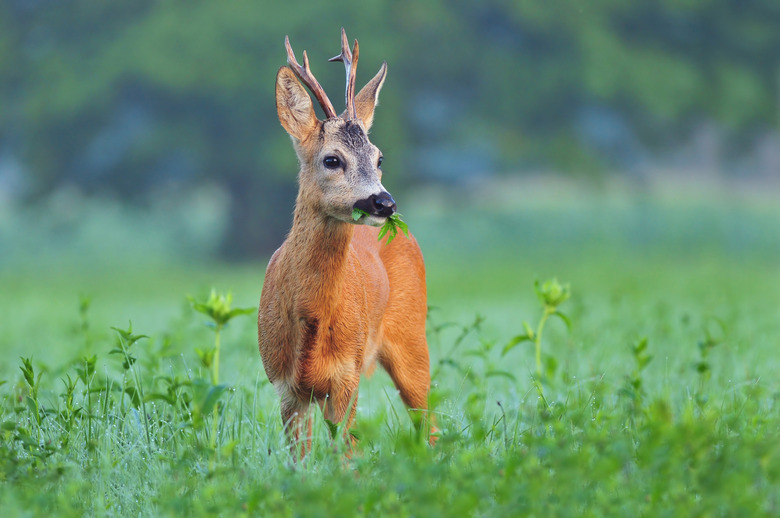The Effects Of Animal Overpopulation
Animal overpopulation occurs when an ecosystem is unable to support the existing wildlife because there are too many of a given species. The environment suffers due to the strain from the natural activities of the overpopulated species. The results can be devastating as animals scrape for food and wander into unnatural habitats in search of something to eat. Disease is also a factor as the ecosystem makes a final attempt to regain a natural balance and order. Overpopulated animal species lead difficult lives with limited resources.
Lack of Food
Lack of Food
Lack of food occurs when there is a breakdown in the food chain due to overpopulation. This is typically a cause-and-effect relationship. For example, in ecosystems where carnivores die out or become extinct, herbivores begin to grow in numbers. Without the balance achieved from the predator-prey relationship, overpopulated herbivores will compete for the same plant species, causing scarcity, or wiping out the plant species entirely. This unnatural balance damages the ecosystem and food chain. When too many of the same animal compete for a similar food source, many die from starvation. Others are forced to leave their natural habitats in search of food.
Wandering
Wandering
When overpopulated animals are starving, their innate survival instincts cause them to wander into unnatural places in search of food. In many cases, overpopulated animals will wander into areas populated by humans. The outcome is animals killed on the highway, property damage and human injury. More than 1 million animals are killed each as they wander onto roads and highways, according to One Animal Family, a website that gathers data from animal organizations. Animals are forced to go through garbage and kill farm animals because their natural ecosystem can no longer support them.
Damaged Ecosystems
Damaged Ecosystems
Overpopulated animals wreak havoc on the ecosystem and surrounding landscape. The overpopulation of deer throughout areas of the United States is destroying the forest and hindering the diversity of tree species. Deer have an appetite for saplings, which puts the forest in danger of becoming pastureland because overpopulated deer consume young trees. Deer grazing promotes the spread of ferns, which block sunlight from other plants, thereby hindering growth in the forest. Overpopulation is a vicious cycle for the ecosystem as the food chain, waterways and land are affected. Animal overpopulation threatens to change the entire make-up of an ecosystem.
Disease
Disease
As Mother Nature makes a desperate attempt to restore balance, diseases related to overpopulation of animals are imminent. However, diseases may also spread to other populations of animals that are not overpopulated, upsetting the balance and potentially harming fragile species. Due to overcrowding in animal shelters, the overabundant pet population is forced to live on the streets. Because these animals are not spayed or neutered, they continue to reproduce, promoting the spread of rabies and other diseases that can affect farm animals and other domesticated animals.
Cite This Article
MLA
Maier, Casandra. "The Effects Of Animal Overpopulation" sciencing.com, https://www.sciencing.com/effects-animal-overpopulation-8249633/. 24 April 2018.
APA
Maier, Casandra. (2018, April 24). The Effects Of Animal Overpopulation. sciencing.com. Retrieved from https://www.sciencing.com/effects-animal-overpopulation-8249633/
Chicago
Maier, Casandra. The Effects Of Animal Overpopulation last modified August 30, 2022. https://www.sciencing.com/effects-animal-overpopulation-8249633/
